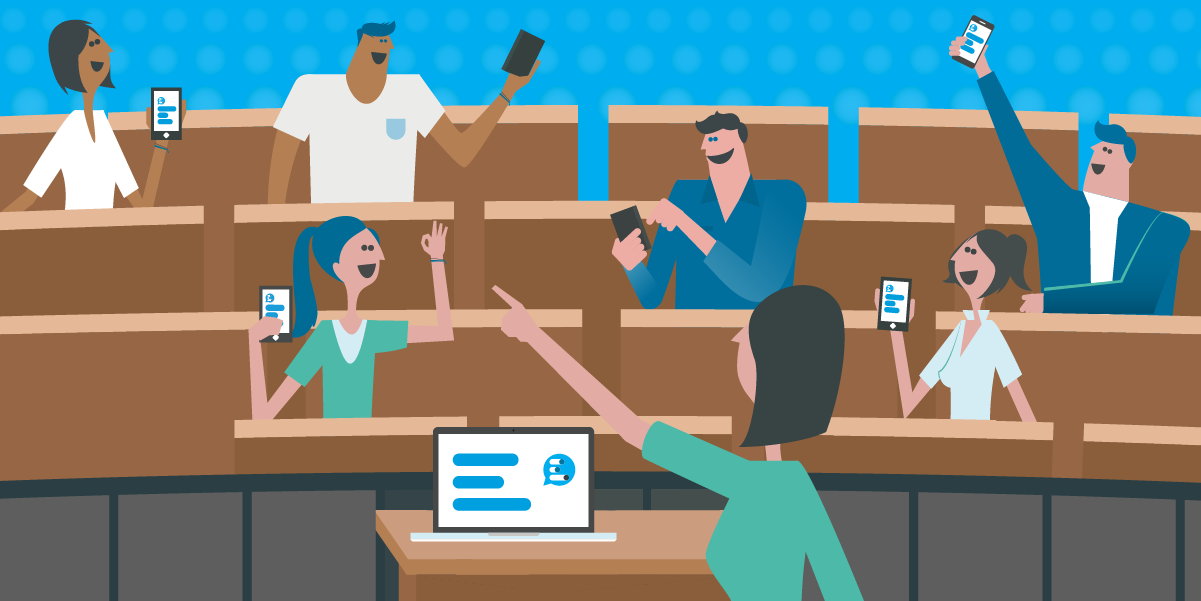Best Practices for Using Clickers to Support Engagement and Learning
The use of this interactive wireless technology is ideal for stimulating student involvement using both interactive whiteboards and for one computer classroom.
Students have no risk of embarrassment with respect to their individual answers and are very motivated to actively participate when using the personal response system (PRS). This interactive wireless system produces active learning by providing each student with a simple and handheld response remote. This remote is non-threatening and is in use from pre-K through college graduate education. PRS is often referred to as Clickers, Classroom Response Systems, and Learner Response Systems.
The engagement of students using the personal response system on a continuous and no-risk basis changes the classroom paradigm of learning. PRS supports teachers with a simple interactive mechanism for achieving classroom interactivity for all students. Using clickers, feedback is available instantaneously at every learning opportunity. According to Writemypaperbro‘s experts, this technology improves classroom teaching and learning, along with supporting teachers’ achieve a technological interactive environment.
Wireless Technology: Response Systems Components

Personal response systems consist of clickers or remotes held by students, along with a receiver placed near projection screen connected to teacher’s computer. Each receiver can normally work with up to 40 clickers. The software which runs the system is specific to each type of system and is typically compatible with both Mac and PC computers. Questions can be easily integrated into power point presentations or the PRS software.
Interactive Technology: 10 Strategies for Using Response Systems to Engage Students
As with all technological tools, there are strategies and methods which are more effective than other techniques. The following are best practices for using a personal response system in a classroom.
- Clicker Assignment – numbering each PRS remote eases tracking and accountability. Assigning each student a specific remote organizes tracking of answers and ensuring student responsibility. Easing organization, distribution, and storage by using a clear calculator pocket chart hung on wall near teacher’s desk.
- Keep Questions Short – this also includes keeping answers short. This strategy supports students’ ability to read and respond to questions quickly using clicker remotes. Do not make questions complex or tricky, response rates decline when students become confused with multipart questions.
- Limit Answer Options – too many answer options slow down student responses and consume too much class time, causing students to lose interest. Do not use more than five answer options to avoid these problems.
- Integrate Questions Periodically During Lessons – students tend to remain focused during lessons when then know that every five to ten minutes they are held accountable by questions via a PRS. It is also essential that students have no preparation time for questions, off the cuff responses provide a more accurate assessment of student understanding.
- Keep Voting Simple – allow no more than two options when voting with a PRS to avoid lengthy explanations, excessive invalid responses by students, and reducing interpretation time.
- Think-Pair-Share – students answer a question using the personal response system. After students see class results they pair up with other students to discuss their response to question. Student groups reach consensus about answer and then re-answer the question using the PRS. To wrap up, one member of each group shares their logic for supporting or changing their answer.
- Stations – as students rotate through stations they are required to answer one or two questions related to each station. This strategy keeps students on task by requiring them to use time wisely, due to the need to answer each station’s questions. This strategy works well with science and math stations.
- Test Reviews – use clickers for fun games such as bingo, baseball, football, and a modification of one person against 100.
- Pre- and Post-Tests – asking thought provoking pre-test questions provides an informal assessment of students’ prior knowledge and experiences with new content. Completing a post-test periodically not only saves paper, it also reduces chances for cheating.
- Do Not Overuse Personal Response System – overuse leads to monotony and loss of student desire to provide accurate responses based on what they really think or know.
Making Connections: Personal Response Systems and Technology Integration
Personal response systems work well with interactive whiteboard technology; however, these clickers work just as well using overhead screens. The PRS system often reveals student misconceptions regarding a concept and is an effective wireless technology tool for identifying these misconceptions early.
Best practices using this interactive technology always involve students in the teaching and learning process. This interactive system is a powerful teaching tool which can turn lessons into a truly interactive fun experience for teachers and students. When using clicker technology, students are more engaged because they have an input when a question is asked.
An advantage of this interactive technology is the ability to save all questions, games, and other activities using this wireless system in a class Wiki. A second advantage is that students are no longer inhibited due to peer pressure. Outspoken students no longer dominate class opinions and quiet students are given a voice. Students answer questions or voice their opinion behind a cloak of anonymity.

